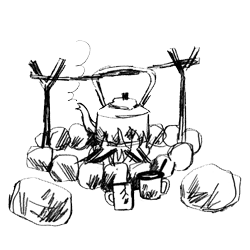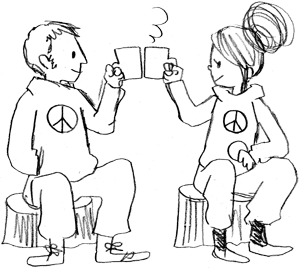
We need to look and care for the current #openweb reboot, as it needs to be used as a core tool for social change and challenge. The #Fediverse, short for Federated Universe, is a part of the #openweb made of human connections through #4opens computer networks. At best, its value is not a collection of software packages, but much more about the flows of human community that builds relationships across diverse groups and regions. Imagine the Fediverse as a web of communities, each represented as a node. These nodes are not defined by the software they use, but by the people and groups that form them:
- Affinity Groups in Activism: communities of action and social movements
- Local Governments: Municipalities using the Fediverse to communicate with residents, share public announcements, and gather feedback.
- Universities: Academic institutions fostering collaboration among students, faculty, and researchers, enabling the sharing of resources and knowledge.
- Families: Family members staying connected, sharing updates, photos, and maintaining family bonds regardless of geographical distances.
- Friend Groups: Friends interacting and sharing moments in a pseudo private, ad-free space, organizing events, and maintaining their social ties.
- Companies: Businesses collaborating internally and with their customers, providing customer support, and sharing company news.
- Interests: People and communities expressing themselves, sharing their thoughts, hobbies, and connecting with like-minded individuals and communities around the world.
Why this as value is that these communities interact seamlessly across the #openweb, regardless of the specific codebase they grow in. Yes it’s important to understand the good #UX of the software that makes these connections possible plays a part, and that each of these nodes use a common protocol, #ActivityPub, to communicate, forming the backbone of “native” #openweb flows. This #4opens interoperability allows people on one codebase to interact with users on another, creating a unified, yet decentralized, social network.
“The Fediverse isn’t about connecting software packages. It’s about connecting communities and people. If you make a Fediverse explainer, try to show some real communities as the nodes in the network, rather than using software packages and their logos. Companies, local governments, universities, families, friend groups, individuals. You can explain what software makes those networks possible in your next slide.” https://mastodon.social/deck/@evan@cosocial.ca/112847724644046695
Though, what meany in our #fashernista and #geekproblem paths miss is this thrives because of the human element. It’s about the people who use these platforms to connect, share, and build spaces that reflect their values and needs. It’s the people and the communities of use that make this real, not simply the tech and the small number of people who code it, let’s talk about the wider groups rather than the few #KISS
What needs composting is that we have an undeclared #stupidindividualism battle pushing to destroy this in numerous ways, we do need to push this back into balance, while holding out a hand to bring people over. Yes, it a step, don’t be scared.
And please try not to be a prat about this, thanks.
